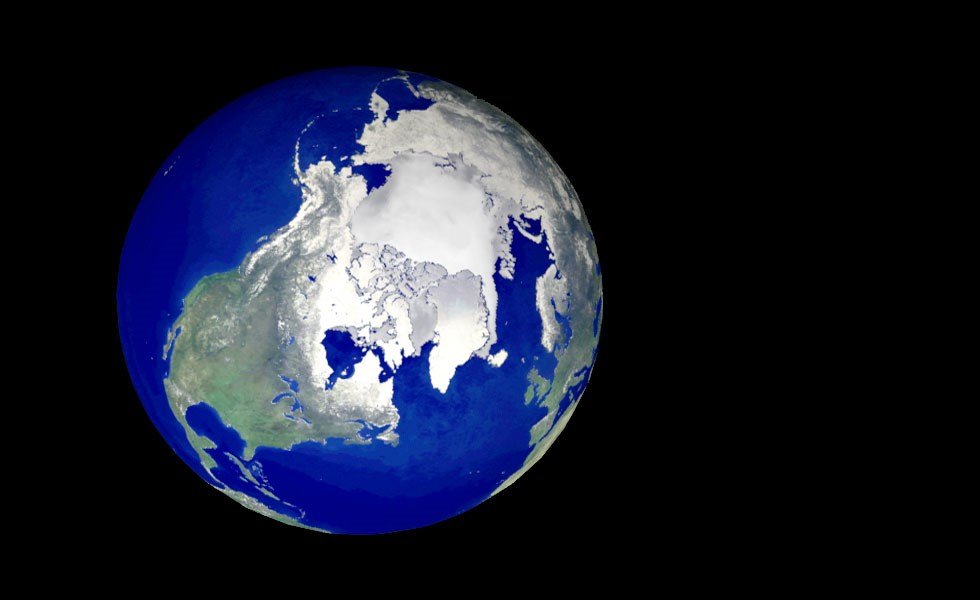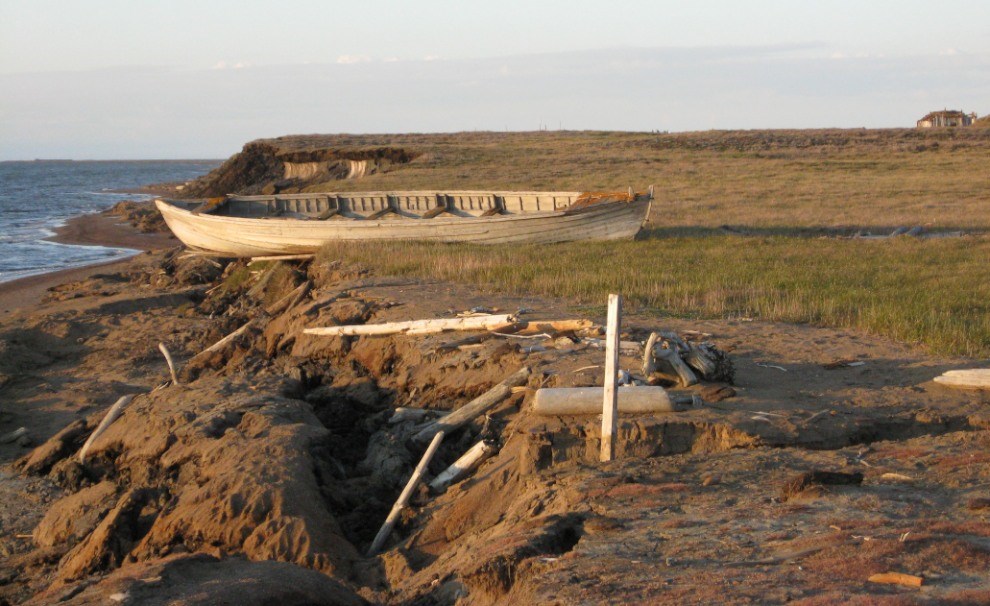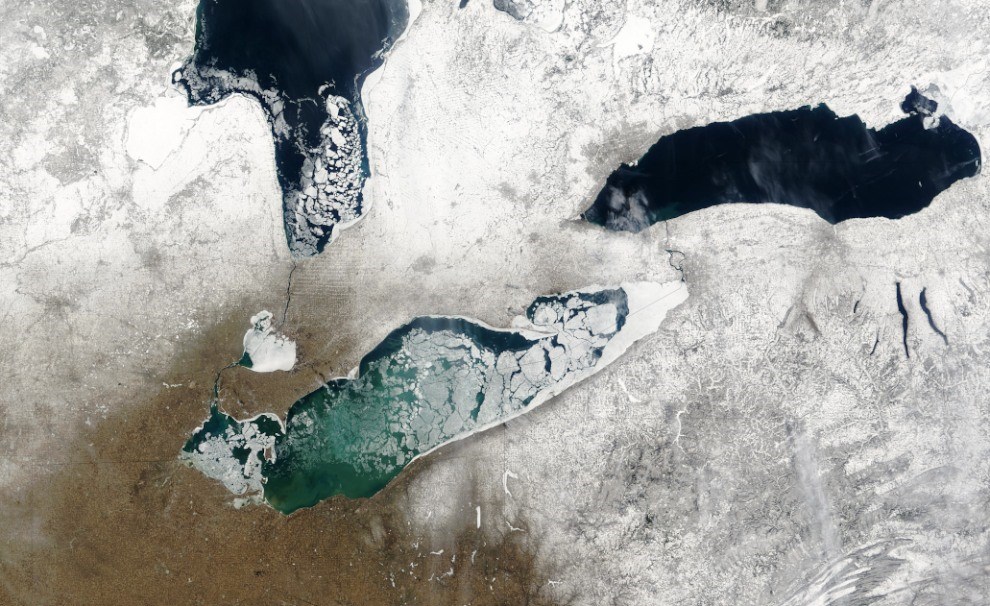Last updated: June 10, 2019
Article
Sea Ice, Lake Ice, and Storms

NASA JPL image, University of Alaska, Fairbanks.
The loss of sea ice, an outcome of global warming, makes coastal areas more vulnerable to wind and wave damage during storms; for example, the rate of erosion along Alaska’s northeastern coastline has doubled over the past 50 years as a result (Karl et al. 2009). Furthermore, longer ice-free seasons are likely to make more heat and moisture available for storms in the Arctic Ocean, increasing their frequency and intensity (Karl et al. 2009). An example from the National Park System is Bering Land Bridge National Preserve. Preserving a long history of sea level rise, Bering Land Bridge and other arctic preserves operate in tandem with greatly increased storm impacts because of longer periods of ice-free conditions on the ocean and melting of beach permafrost (Pilkey and Young 2009). Of note are the trials and tribulations of the citizens of Shishmaref, whose village and livelihood are threatened by global warming, sea level rise, and severe beach erosion (Pilkey and Young 2009). Sea level rise and storm activity are putting this culture and its resources in peril.

USGS image by Benjamin Jones.
Increasing global temperatures also decreases the amount of lake ice. From 1973 to 2008, the maximum seasonal coverage of ice on the Great Lakes decreased by about 30%. Less lake ice equates to greater coastal erosion during more intense storms. The strong flow of cold air across large areas of relatively warm, ice-free water produces “lake-effect” snow. Since 1950, the southern and eastern shores of the Great Lakes have experienced an increased lake effect (Karl et al. 2009).

NASA image by Jacques Descloitres.
